Pancharatra - Vaishnava System Of Worship
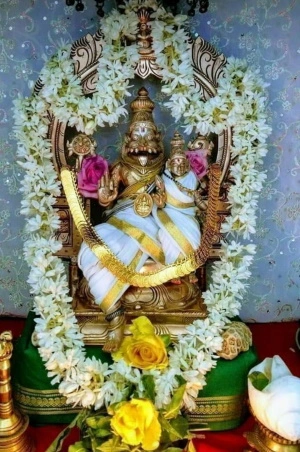
Pancharatra is a division of the Agamas dedicated to the worship of Narayana.
Pacharatra has at its base Srimad Bhagavata and it became prominent after the time of Sri Ramanuja (1017 - 1137 AD).
Pancharatra is also called Bhagavata Shastra, Bhagavacchastra, Sattvata Tantra, and Vasudeva Mata.
It was propounded by Vasudeva himself and later expanded by Brahma, Rudra, Indra, and Rishis.
Meaning of Pancharatra
According to Shatapatha Brahmana, Pancharatra refers to a five-night long yaga that establishes Narayana as Paramatma.
Pancharatra also can mean five kinds of thought put together - Veda, Vedanta, Purana, Samkhya, and Yoga.
In this case, the term ratra would mean a system of thought.
It would also mean five kinds of knowledge: one which gives immortality, one which gives moksha, one which gives devotion to Krishna, knowledge about yoga, and knowledge about worldly affairs.
Pancharatra texts
Pancharatra texts are divided into three groups:
- Divya
- Muni prokta
- Paurusha
Divya
This group includes Sattvata Samhita, Paushkara Samhita, and Jayakhya Samhita.
They were revealed by Vasudeva himself.
They are based on Vedic principles.
Temples, where worship is done using the Divya texts, are called Divya Deshams.
These texts were received by Brahma, Rudra, and Indra and they propagated them around the world.
Muni prokta
After receiving the Divya Agamas, Brahma, Rudra, and Indra composed their own versions.
Sages Marichi, Atri, Angira, Pulaha, Pulastya, Kratu, and Vasishta also authored their own Samhitas.
Ishwara Samhita, Parameshwara Samhita, and Jayottara Samhita, Sanatkumara Samhita, Padmodbhava Samhita, Maya Vaibhava Samhita, Tejo Dravina Samhita, Satya Samhita, Pancha Prasna Samhita, Shuka Prasna Samhita, and Tattva Sagara Samhita are part of this group.
Paurusha
This group written by humans is less authoritative and is used only if the other two groups are not available.
According to Vishamitra Samhita, a hundred crores of Pancharatra texts were there.
Now, only a minuscule part of this is available.
Contents of Pancharatra
Pancharatra texts are written in four parts.
- Jnana Pada - spiritual principles such as Paramatma and Jeevatma.
- Yoga Pada - practices to merge into the supreme truth,
- Kriya Pada - rules and procedures for idol worship, construction of temples, etc.
- Charya Pada - rules and code of conduct for sadhakas.
Pancharatra texts deal with ten topics:
- Bhagavat Samhita - nature of Narayana and his six aspects - jnana, shakti, bala, aiswarya, veerya, and tejas.
- Karma Samhita - thirteen types of action.
- Vidyamayi Samhita - knowledge of prakriti.
- Kala Samhita - concept of time.
- Kartavya Samhita - duties such as worship, and meditation.
- Vaisheshika kriya - special ceremonies in temples such as pratishta, and festivals
- Samyama Samhita - yogic practices.
- Chita Samhita - yogic practices.
- Marga Samhita - path to moksha.
- Moksha Samhita - the concept of moksha.
Four Siddhantas
Vedic procedures are very elaborate with a large number of injunctions.
They could be practiced only by a limited number of people.
Pancharatra was meant for the common man.
The primary philosophies of the Pancharatra system are Samkhya, and Yoga.
There are four Siddhantas in Pancharatra but all of them assert that Narayana is Paramatma and moksha can be obtained only by worshiping him.
They differ only in the mode of worship.
The four Siddhantas are:
Mantra Siddhanta
In this, a single Devata is worshiped.
Along with this single Devata, his consorts, weapons, etc. are also worshiped.
Use of mantras, mandalas, mudras, and homas are prominent in this system.
Agama Siddhanta
In this, the chaturvyuha, Sankarshana, Vasudeva, Pradyumna, and Aniruddha are worshiped together.
All four are installed inside the sanctum and worshiped with equal importance.
Tantra Siddhanta
In this, in addition to the chaturvyuha, Vishnu, Narayana, Hayagreeva, Varaha, and Narasimha are also worshiped.
The principal Devata is at the center and others are placed around him in the eight directions.
Mantras and procedures are given by Siddhas and are different from the Vedic.
Tantrantara Siddhanta
In this, a devata with many faces is worshiped.
Principles of Pancharatra
- Narayana is both Paramatma and a Devata who can be physically worshiped.
- Lakshmi is his shakti.
- Devotion to and worship of Narayana lead to moksha.
Recommended for you
Lord Ganesha appears before Devas and Rishis mounted on a lion
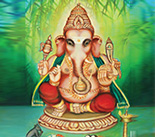 Click here to know more..
Click here to know more..
What Is An Avatara And What Is Its Purpose?
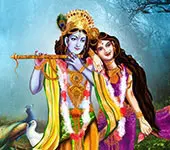
This audio discourse which is part of Bhagavata series tells you about what is an avatara and why Bhagavan takes avataras.....
Click here to know more..Dukhatarana Shiva Stotram
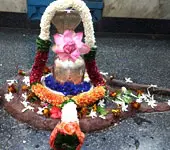
mantraatman niyamin sadaa pashupate bhooman dhruvam shankara shambho paalaya maam bhavaalayapate samsaaraduh'khaarnavaat.....
Click here to know more..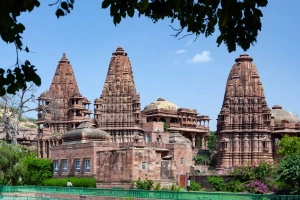
English Topics
Temples
Click on any topic to open
- 71 Ahobilam - Lord Narasimha's Sacred Abode
- 70 Malaikottai Temple, Trichy - Discover Spiritual Bliss
- 69 Jambukeswarar Temple, Trichy
- 68 Vaitheeswaran Koil - A Healing Pilgrimage
- 67 Dwaraka and Somnath
- 66 Khidkali Mahadev Mandir
- 65 Pongu Sani Temple, Thirukollikadu
- 64 The Unique And Fascinating Jharni Narasimhaswamy Temple, Bidar
- 63 Yamunotri: A Spiritual Haven in the Himalayas
- 62 Anantha Padmanabha Swamy Temple - Fascinating Legends
Please wait while the audio list loads..
30
Ganapathy
Shiva
Hanuman
Devi
Vishnu Sahasranama
Mahabharatam
Practical Wisdom
Yoga Vasishta
Vedas
Rituals
Rare Topics
Devi Mahatmyam
Glory of Venkatesha
Shani Mahatmya
Story of Sri Yantra
Rudram Explained
Atharva Sheersha
Sri Suktam
Kathopanishad
Ramayana
Mystique
Mantra Shastra
Bharat Matha
Bhagavatam
Astrology
Temples
Spiritual books
Purana Stories
Festivals
Sages and Saints
